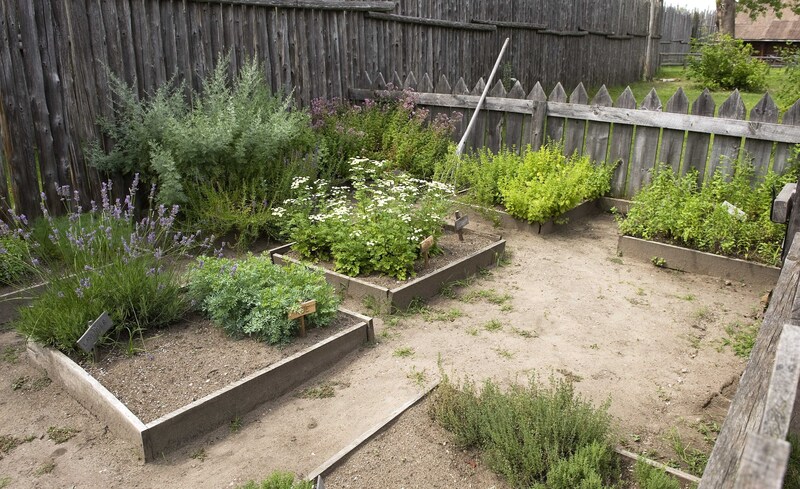Crafting a Storm-Resilient Garden for All Seasons
Posted on 25/06/2025
Crafting a Storm-Resilient Garden for All Seasons
Gardening is a dynamic harmony with nature, requiring adaptability to changing weather patterns. As climate change leads to increasingly severe storms, every gardener seeks ways to create beautiful but also storm-resilient gardens. This means designing spaces that can withstand tornadoes, hurricanes, heavy rains, droughts, and sudden temperature fluctuations--remaining flexible and flourishing all year round.
Understanding the Impact of Extreme Weather on Gardens
Before beginning your journey to a storm-proof garden, it's critical to assess the risks your region faces. The U.S., for example, is subject to tornadoes, hurricanes, torrential rains, intense sun, and sudden frosts. Each of these risks can be mitigated with thoughtful garden planning.
- Wind Damage: Can break stems, uproot plants, and scatter debris.
- Flooding: Drowns roots, leads to soil erosion, and can bring pollutants.
- Hail: Shreds leaves, breaks branches, and disfigures plants.
- Drought: Causes wilting, stunted growth, and can kill less hardy plants.
Understanding these threats is the first step in storm-resistant gardening.

Key Principles of a Storm-Resilient Garden Design
To create a garden resilient to storms, focus on strategies that balance aesthetics with durability. Below are essential principles:
- Site Assessment: Identify natural drainage patterns, sun exposure, and windbreaks on your property.
- Soil Health: Ensure well-drained soil that can handle excess water and periods of drought.
- Plant Selection: Choose native and storm-tolerant species adapted to local conditions.
- Layering: Use a mixture of groundcovers, shrubs, and trees for natural protection and biodiversity.
- Flexible Structure: Incorporate supports and barriers designed to reduce damage during storms.
1. Site Assessment and Microclimates
Each yard has unique microclimates--spots warmer, cooler, more exposed or more sheltered. Walk your garden during a storm (or after one) and observe:
- Where does water pool?
- Which areas are battered by the wind?
- Where do plants endure sun or shade the most?
This knowledge guides stormproof garden design, letting you put the right plants in the right places.
2. Soil Health: Building Strong Foundations
Healthy soil is the cornerstone of a durable all-weather garden. Amend clay soils with compost and coarse sand to improve drainage. In sandy soils, add organic matter to enhance water retention. Install raised beds if flooding is an issue. Deep-rooted plants help stabilize soil and prevent erosion, while mulch reduces evaporation and protects roots from temperature extremes.
Choosing the Right Plants for All Seasons
Plant selection is your strongest defense against storm damage. Prioritize perennial natives--they're adapted to local weather, support wildlife, and typically require less care.
Characteristics of Storm-Tough Plants:
- Deep roots: Prevent uprooting and reduce erosion.
- Flexible stems: Bend rather than break in strong winds.
- Waxy or leathery leaves: Resist hail and wind abrasion.
- Tolerance to wet/dry cycles: Survive drought and heavy rains.
Top Plant Choices by Region
- Southeast U.S. (hurricanes, heavy rain): Bald cypress, swamp milkweed, wax myrtle.
- Midwest (tornadoes, hail): Prairie dropseed, coneflower, switchgrass.
- West Coast (drought, wildfire): Manzanita, ceanothus, blue fescue.
- Northeast (ice, wind, snow): Inkberry holly, winterberry, red osier dogwood.
Mixing annuals and perennials ensures continuous color and food for pollinators, while woody shrubs and trees buffer winds and extremes.
The Backbone: Trees and Structural Plants
Trees act as living windbreaks in a storm-resilient landscape. Choose varieties known for strong wood and good root anchoring--think oaks, hickories, sweetgums, and certain pines. When planting, allow for natural movement (avoid staking tightly) so trunks develop wind resistance.
Tips for Tree Planting:
- Plant in groups or staggered rows: To diffuse wind, not create a wall.
- Mulch properly: Insulate roots and retain moisture.
- Prune regularly: Remove weak branches and encourage a strong central leader.
Storm-Resilient Garden Structures and Hardscape
Hardscaping elements not only add beauty but also play vital roles in defending from storms:
- Gravel paths and French drains: Channel water away from planted areas.
- Low retaining walls: Prevent soil washouts and landscape erosion.
- Permeable pavers and rain gardens: Capture runoff and let it soak in slowly.
- Flexible, wind-resistant trellises: Support vines and act as mini windbreaks for sensitive plants.
Choose materials that are durable and will not become hazardous in high winds (skip lightweight plastic decorations and lightweight pots).
Smart Water Management: Drought and Flood Protection
A garden designed for weather extremes should handle both deluge and drought. Here's how to balance both needs:
- Rain Gardens: Depressions planted with native grasses, sedges, and flowers catch runoff and help filter pollution.
- Bioswales: Channels that move rainwater slowly, reducing peak flow and erosion.
- Rain Barrels: Collect roof runoff for watering plant beds during dry spells.
- Drought-Tolerant Design: "Hydrozone" your beds--group thirsty plants together, and place drought-tolerant species on the edges.
Mulching: The All-Season Ally
Apply 2-3 inches of organic mulch to keep soil cool, suppress weeds, and insulate roots from heat and cold. After a storm, check for mulch displacement and replenish when necessary.
Wind Protection Strategies
Wind is one of the most damaging storm elements. You can reduce wind speed and damage with a few smart tactics:
- Plant Living Windbreaks: Hedges of holly, juniper, or laurel.
- Layered Planting: Low groundcovers to tall shrubs slow gusts and shield sensitive plants.
- Strategic Fencing: Open-weave fences dissipate wind energy, whereas solid fences can be knocked over.
- Wind-Resistant Supports: Use flexible ties for young trees and support top-heavy plants during storm season.
Pre-storm and Post-Storm Garden Care
Before the Storm
- Secure garden structures and tools.
- Move potted plants into sheltered areas.
- Harvest ripe fruit and flowers to prevent wind damage or loss.
- Prune damaged or overgrown branches that could break and hurt the plant or structures.
- Check drainage: Clear gutters, swales, and French drains of debris.
After the Storm
- Assess damage safely (look for downed power lines, unstable trees).
- Remove debris and broken branches.
- Rescue plants: Gently re-seat uprooted plants and stake flats if needed.
- Address soil compaction: Aerate sodden soil to help roots breathe.
- Monitor for disease outbreaks (like molds after flooding or leaf scorch after drought).
- Re-mulch, repair paths, and replant as needed.
Year-Round Maintenance for Resilience
Achieving stormproofing in your garden is an ongoing journey. Develop seasonal routines to check and adapt your landscape:
- Spring: Clean up winter debris, check soil health, and assess drainage. Prune for air circulation.
- Summer: Watch for drought stress--water deeply and mulch if needed. Keep an eye on wind exposure and secure support structures.
- Autumn: Prepare for storms by pruning, adding mulch, and cleaning up fallen leaves (which can clog drains).
- Winter: Protect tender plants with row covers or burlap wraps, and check structural plantings after snow or ice events.
Embracing Wildlife and Biodiversity
A storm-resilient garden for all seasons is richer with life. Birds, beneficial insects, and amphibians help maintain ecological balance and can even assist in post-storm garden recovery. Grow berry-producing shrubs, provide water sources, and leave snags or brush piles (safely away from potential hazards) for shelter.

Inspiration: Example Storm-Resilient Garden Layout
For a typical residential property:
- Windward Side: Layered windbreak of native shrubs (holly, viburnum) and tough grasses.
- Central Beds: Deep-rooted perennials (coneflower, liatris) and sturdy ornamentals (daylilies, sedum).
- Rain Garden: At the base of roofline/gutter outlets, planted with swamp milkweed, blue flag iris, and sedges.
- Raised Beds: For vegetables and herbs, with gravel or mulch paths between for drainage.
- Large Deciduous Trees: Strategically placed for shade and wind buffering.
Conclusion: Weatherproofing Gardens for a Resilient Future
Every region faces unique climatic challenges, but with smart planning, your landscape can thrive despite storms. By focusing on resilient plant choices, strategic design, and consistent maintenance, you ensure your garden endures and flourishes across all seasons. A garden resistant to storms is not merely a practical investment--it's a way to reconnect with nature, support biodiversity, and find beauty in resilience.
Begin today: Assess your garden, adopt resilient practices, and share your experiences to inspire a new generation of storm-savvy gardeners!



